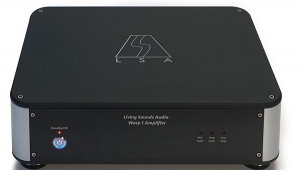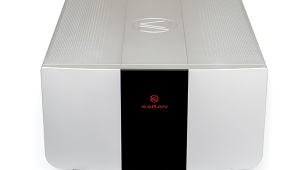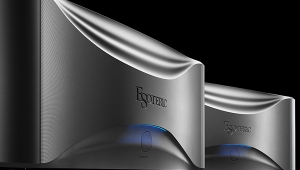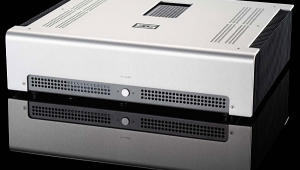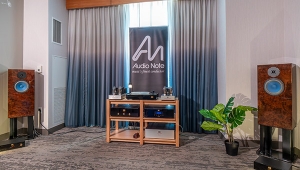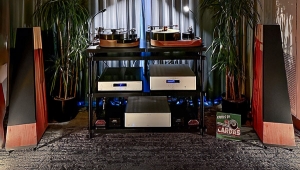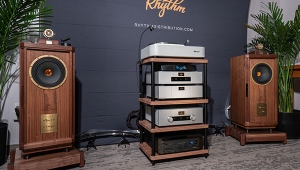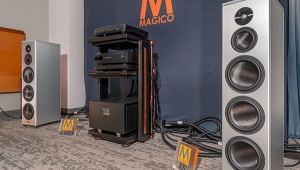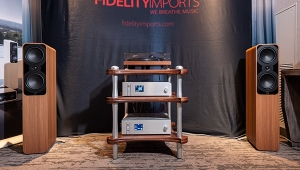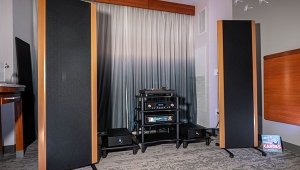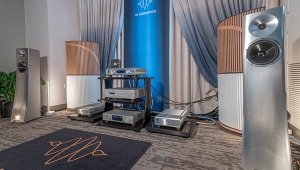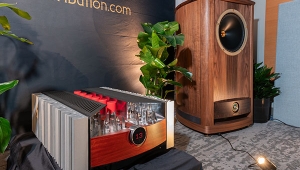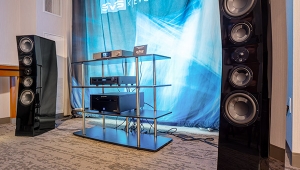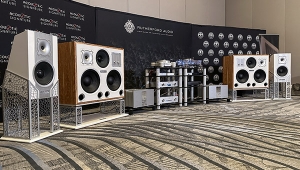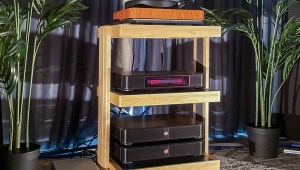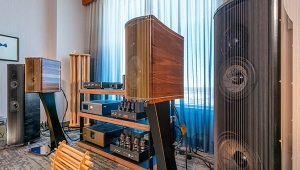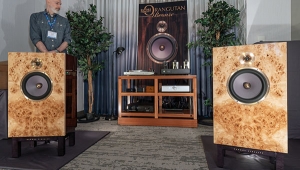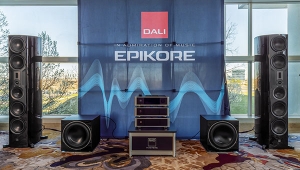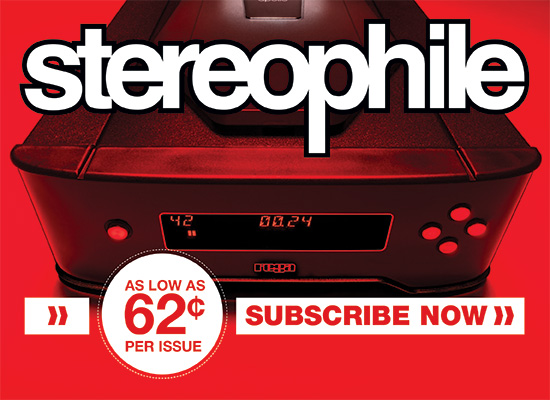| Columns Retired Columns & Blogs |
YBA 1 Alpha HC power amplifier Page 3
One traditional area of solid-state superiority is in the bass; this was confirmed when I compared the YBA 1 with the Balanced Audio Technology VK-60. As tube amps go, the VK-60 is actually pretty good in the bass, but the YBA 1 was able to extract a more weighty sense of bass drums in Planet Drum (Rykodisc RC-10206). However, by solid-state standards, the YBA 1's bass performance was not exceptional. With levels matched at 1kHz within 0.1dB, bass from the Rowland Model 2 seemed a bit cleaner, bass transients more crisply articulated. This was with the Dunlavy SC-IV, which has bass response extending to the low 20s (Hz, that is). With the Rosinanté Evolution Si, which has less output below 40Hz, the bass performance superiority of the Rowland was less marked.
Footnote 3: Having been at the recording session helps, but, errors of memory aside, judging the sound of the recording as being similar to what was heard in the studio tells us only that the replay system as a whole has allowed re-creation of the original sound, not whether a certain component of the system is accurate. It may be a matter of various components making additions and subtractions in a complementary manner.
Although the YBA 1's 85W per channel puts it in the "moderate" power category, it had no trouble driving the Dunlavys or the Rosinantés to levels that were, for me, more than loud enough. The Dunlavy SC-IV and the Rosinanté Evolution Si are both fairly high-sensitivity (90+dB) designs; as always, the choice of amplifier must be considered in the context of the match between amplifier power output and speaker sensitivity, as well as one's preferred listening level. Assuming the speaker can handle it, the high power available from amplifiers like the Carver Lightstar Reference will undoubtedly result in greater maximum loudness and more effortless high-level dynamics, but, at lower levels, such amps don't quite have the subtlety of the YBA 1.
YBA vs Rowland
To get a handle on the YBA 1's performance in comparative terms, I spent a lot of time switching back and forth between it and the Jeff Rowland Design Group Model 2. In many ways, these amps are natural peers/competitors. They have similar power ratings (Rowland, 75Wpc; YBA, 85Wpc); they're in roughly the same price range (Rowland, $5800; YBA, $7000); they're both small but heavy; and both represent their designers' at-times-fanatical pursuit of the twin goals of accuracy and musicality.
The Rowland Model 2 is firmly established as a Stereophile Class A Recommended Component. When I reviewed it in 1995 (Vol.18 No.8), I thought it was "by a small but significant margin, the best-sounding amplifier I've had a chance to evaluate," a statement that I would still stand by now, but I would add "solid-state" before "amplifier." (In some respects, I prefer the tube-based Balanced Audio Technology VK-60 to the Rowland Model 2.)
Although the YBA 1 and the Rowland Model 2 have certain sonic similarities—both are superb by almost any standard—listening comparisons revealed that each amplifier has a distinctive character. I've already commented that the Rowland evinced better bass performance (at least when driving the Dunlavy SC-IVs); it also had a somewhat more incisive and dynamic sound, the YBA 1 sounding a bit more polite or laid-back in comparison. Several times, after switching from the YBA to the Rowland, having matched levels at 1kHz and corrected for absolute polarity, I thought that the music played through the Rowland was louder. Each time, I rechecked the test signal voltage at the amplifier terminals, and confirmed that it was within 0.1dB of the YBA, even on the low side (eg, YBA, 1.207V; Rowland, 1.197V).
The Rowland seemed ever-so-slightly more forward than the YBA, with a subjectively more extended top end that gave percussion instruments, especially cymbals and bells, greater presence. Is the YBA, in its pursuit of a grainless upper midrange, "shaving off" some information, or is the Rowland adding grain that emphasizes detail? Tough call. If the measured performance of the YBA 1, like that of the Rowland Model 2, is beyond reproach—as I suspect it is—the answer is not going to be found there, so we're back to listening to recordings.
Do we, can we, know what a given recording really sounds like? I don't think so. Every recording has to be listened to on some kind of system, and every microphone has sonic characteristics that are apparent only when you listen to the sound it produces through an amplifier and speakers, each with their own sonic characteristics (footnote 3). What I can say is that with some recordings—like most Dorian, Chesky, and Reference Recordings releases—the sound of the Rowland Model 2 was more exciting and involving than that of the YBA 1. With others, such as the typical multimiked efforts from nonaudiophile companies, the YBA 1 allowed for a more relaxed, less in-your-face listening experience. It was not a matter of the YBA 1 being less revealing, but rather a matter of what it was revealing—which was, if you like, a "kinder, gentler" sonic world.
Concluding thoughts
Over the years, I must have heard audio systems featuring YBA electronics on at least a couple of dozen occasions—some at dealers, others at shows. They used a variety of speakers, including dynamic, electrostatic, ribbon, and hybrid designs. Some of the rooms were Tube-Trapped/RoomTuned to a fare-thee-well; others were pretty much bare except for the equipment and chairs. Although some of these systems were more impressive than others, in no case was the sound bad—a statement I can't make about systems I've heard that used electronics from some of the best-known names in high-end audio. Luck? Coincidence? Or is there something about YBA components that make it more likely that the results will be pleasing?
Based on my experience with the YBA 1, I'd opt for the last hypothesis. "Simplement Musical," said the sign in the YBA room at the last WCES, and, for once, the manufacturer's slogan was an accurate descriptor of the product. With suitable associated components, the YBA 1 Alpha HC offers sound that's, well, simply musical. A class act. In fact, I'd say, a Class A act.
Footnote 3: Having been at the recording session helps, but, errors of memory aside, judging the sound of the recording as being similar to what was heard in the studio tells us only that the replay system as a whole has allowed re-creation of the original sound, not whether a certain component of the system is accurate. It may be a matter of various components making additions and subtractions in a complementary manner.
- Log in or register to post comments











